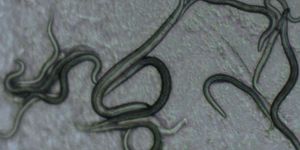Plants Moved to Land by Stealing Genes from Soil Bacteria
Algae were the first pants on earth, and they lived underwater. How they managed to move onto land was largely a mystery, until now. By studying the genome of an unusual alga, an international group of scientists have discovered that to move to land, algae “stole” better-adapted genes from soil bacteria.
According to Gane Ka-Shu Wong, co-investigator of the study, “This is one of the most important events in the evolution of life on this planet - without which we as a species would not exist...The movement of life from water to land - called terrestrialization - began with plants and was followed by animals and then, of course, humans. This study establishes how that first step took place (University of Alberta: 2019).”
Freshwater algae typically live in water. As water levels vary, they are often forced to live in drier environments too where soil bacteria also live. Needing to adapt in this way leads to genetic variance. Thus, researchers searched for algae in these environments to understand at what point gene mutations and adaptations first occurred in algae during their transition from water to land.
Towards this end, they eventually found a single-celled organism accustomed to living on rocks, more often dry than wet. A new species of Spirogloea Muscicola, an analysis of its DNA showed that it had a cluster of genes that made it closely related to land plants too. When searching DNA databases to find out where these genes may have originated from, they found that soil bacteria was the only possibility (Chung: 2019). But how?
Most claims of horizontal gene transfers between bacteria and more complex organisms are disputed as contamination (Pennisi: 2019). However, from studying the Spirogloea’s behavior with soil bacteria, the researchers found that it can indeed “eat” soil bacteria, and effectively integrate its DNA into its own. Analyzing the alga’s genome after having consumed soil bacteria, they found that both genomes became intertwined, as marked by their interruption by chunks of DNA known as “introns”, which, although common among the genes of complex organisms, don’t exist in bacteria (Chung: 2019).
This is a surprising finding given that horizontal gene transfer was previously believed to only occur among bacteria. According to Andrew Roger, an evolutionary biologist at Dalhousie University, Canada, “This finding coupled with a number of other recent findings within other major kingdoms of eukaryotes (organisms with complex cells) shows that it (horizontal gene transfer) truly is an important mechanism by which complex life evolves (ibid.)."
Sources
University of Alberta
Chung, Emily: CBC News
Pennisi, Elizabeth: Science Mag









